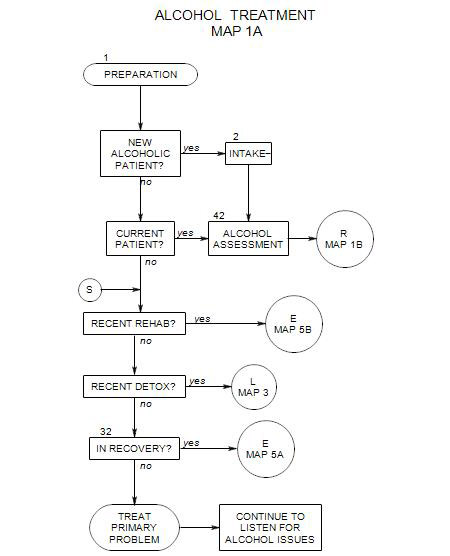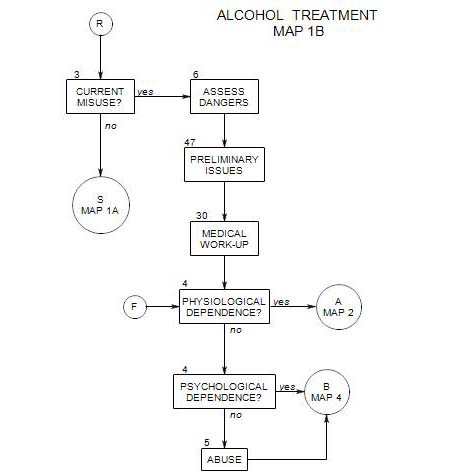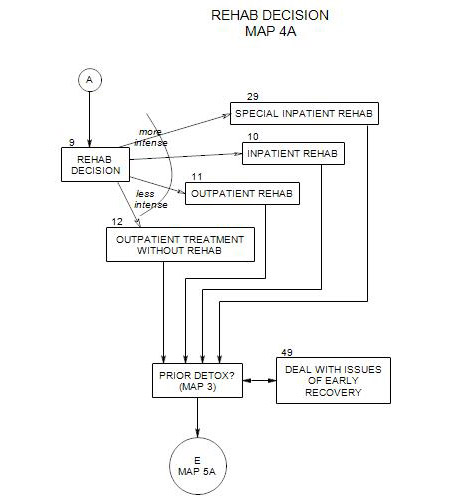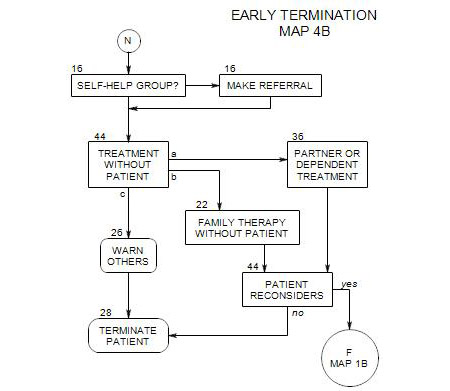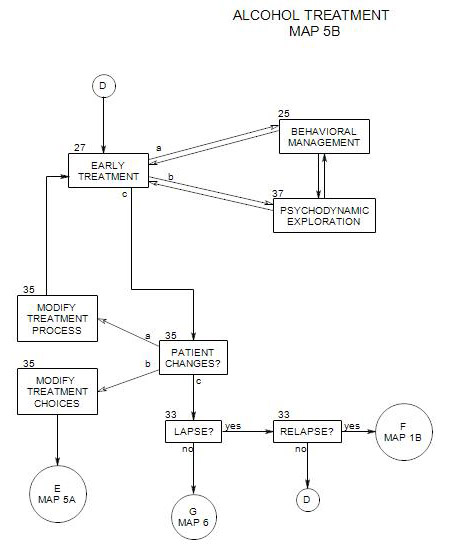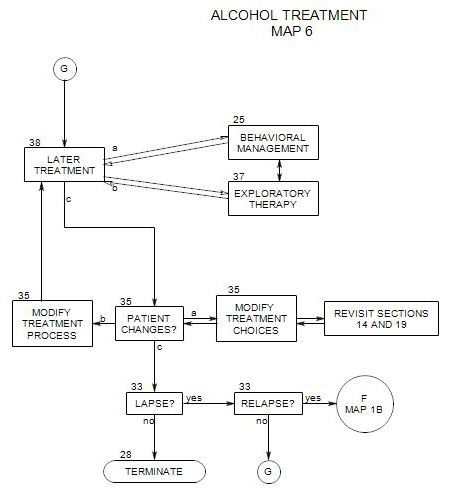21. INVOLVING OTHERS
- This section doesn’t appear on the maps; it is referenced by Section 2 [Intake], [Primary Care Decision], Section 19 [Adjunctive Care Decision], and Section 27 [Ongoing Psychotherapy]. Other related issues are discussed in Section 44 [Treatment without the Patient], Section 36 [Treat the Patient’s Partner or Dependent], and Section 22 [Family Therapy]
There are a variety of ways and times for involving a patient’s family and friends – either by involving them directly in the treatment process or by informing them of risks posed by the patient, especially by termination without adequate treatment. This section is directed toward involving them in the treatment process, and Section 26 is focused on the latter.
Many psychotherapists believe that for individual psychotherapy to be effective, they must avoid direct involvement with the patient’s life outside the office as well as contact with people important to the patient. Others would argue that significant people in the patient’s life must always be involved, if treatment is to have a chance of success.
For addicted people, it is usually not sufficient to work intrapsychically – to assume that better self awareness will necessarily lead to a relief from symptoms. It is also difficult for people to make behavioral changes – such as stopping or modifying their alcohol use – independently of their physical and social contexts. For these reasons, outside support and involvement are essential parts of early treatment. Later, when the patient has been sober for a period of time, treatment may become less behaviorally and interpersonally oriented and more psychodynamic. At that point, direct involvement of others may be less important or even detrimental to the work that needs to be done.
Issues in involving others include –
- When can you or should you involve others?
- Who should be involved?
- How should you go about involving them?
21a. Who Should Be Involved?
Having a list of the people close to the patient can be of great value in deciding whether any of them should be involved. In general, they ought to be –
- in close enough contact with the patient that they can provide useful information about him/her.
- in positions to have an impact on the patient and his/her drinking or other psychological issues.
- acceptable to the patient as people he/she wants involved in the therapy.
- likely to be more helpful than harmful in working with the patient.
This doesn’t mean that all who could be involved should be. Some may be excluded for a variety of reasons. Involvement of others can dilute therapeutic intensity, change the issues treated, and require different treatment skills from the therapist. Others may resist treatment, encourage the patient to continue drinking, or otherwise undermine the work.
21b. When to Involve Others
When treatment is primarily one-to one, involving other family and friends in the therapy can be either a benefit or a detriment to the work.
DURING THE INTAKE PROCESS
Some patients may want to include friends or family in the intake process. Other people may comfort the patient, help with the patient’s guilt or anxiety about drinking, or provide information that the patient would forget or avoid. A family member may be necessary to bring the patient to the session, especially if the patient is confused or unable to get to sessions alone.
If someone else appears with the patient for the first session, you have a choice to make about whether to include that person from the start, or have him/her wait. If you have the other person wait, he/she can still be invited into the session later on.
Even if the patient comes alone, you may want to raise the issue of inviting in others. If you do, it’s better to have the patient’s approval and cooperation, both for ethical reasons and for the patient’s sense of empowerment in decisions that affect his/her life.
- Ask your patient if anyone else can provide a different perspective on his/her issues, to help fill out the diagnostic picture.
- Go over the possibilities with your patient, and discuss the pros and cons of contacting each. This can help you get a picture of the people around your patient as well as open the doors to contacting them.
- Be sure to discuss the limits of what you can ask – especially, what issues the patient doesn’t want raised with particular friends or family members.
- Decide whether to have the other person in with your patient or separately.
- Try to decide in advance what you would like to know from each person, but be open to new information.
- When the person arrives, include questions about the patient’s alcohol use.
WHEN DECIDING ON TREATMENT MODALITIES
A session or two with the family at the start of treatment can help you select from individual, couple and family therapy as the primary and adjunctive treatment modalities.
DURING PSYCHOTHERAPY
There may be times that it pays to bring other family members into the treatment setting, either because their perspectives can add to the treatment or because they affect the treatment and the patient’s ability to make life changes.
Including them can broaden the work, change the focus from primarily the patient’s alcohol misuse to include other intrapsychic and interpersonal issues. Others can –
- provide information the patient isn’t aware of or is unlikely to tell.
- support each other when dealing with the patient.
- learn to modify unhealthy relationship patterns involving the patient.
- pressure the patient for change.
It can also be useful to have a few couple or family sessions at times when individual treatment has bogged down.
Preparation should include some anticipation of the likely effect that including others in the session can have, and a plan to review the family or couple session with the patient in subsequent individual sessions. Different patients will have different reactions, including a sense that you have abandoned them, that you have given them or the others more attention or credibility, that you will or should fight their family battles for them, and so on.
IN TIMES OF CRISIS
See Section 26 regarding informing others of dangers. If others are already involved in helping the patient, then if the patient experiences a crisis, he/she will be more likely to call on them for help, and they will be more likely to give it.
21c. Formats for Involving Others
Others can be involved in a wide variety of ways, depending on their needs and the needs of your patient.
If you decide to continue working with your patient individually, you can –
- see others individually also. The others can be seen either as adjunctive to treatment of the identified patient, or they can have their own therapy. If they are adjunctive, that point should be clear. If you see them for their own treatment, it can be valuable to hear reports of family interactions from multiple perspectives and can give you a richer overall understanding of each of the family members. It can also raise issues of conflict of interest for you when two or more people have conflicting needs and perspectives.
- send others to a different therapist or therapists for their own individual treatment. Depending on when in the treatment process you do this, it can lead to feelings of rejection on the part of the patient referred out. At the same time, it can avoid some potential conflicts. You can coordinate treatment with the other therapist as needed.
- have others in to the patient’s sessions individually or as a family as needed, to provide information or to work on specific issues in their relationships.
- send others to Al-Anon or Al-a-Teen for support.
You may decide to combine individual sessions with ongoing couple or family therapy. In this case, you can
- work with your patient in parallel with the family work. As in dealing with different individuals, you get multiple perspectives but family members tend to assume that the identified patient has special priority to you. At the same time, the identified patient has to cope with changes in you as you switch from individual therapist to family therapist and back.
- send them to another therapist to deal with family issues. If you send them as a family, your patient may or may not be included in those family sessions. Here it can be valuable for you to keep in regular contact with the family therapist.
You can include others directly with the patient in family sessions. Here the family becomes the patient and individual work is adjunctive to it. Options include having the family sessions –
- with the patient.
- without the patient’s involvement, if necessary.
21d. Keeping Records
Any time that you contact others about your patient, whether it be about dangers that the patient may be facing him/herself or creating for them, you should make a record of it in the patient’s file, including details of who was contacted, what was said, when, under what circumstances, etc.
You should also record your discussion and your patient’s reaction in the non-notes section of his/her record, so that you can refer to it later on if necessary, without having to disclose your own therapy notes.
